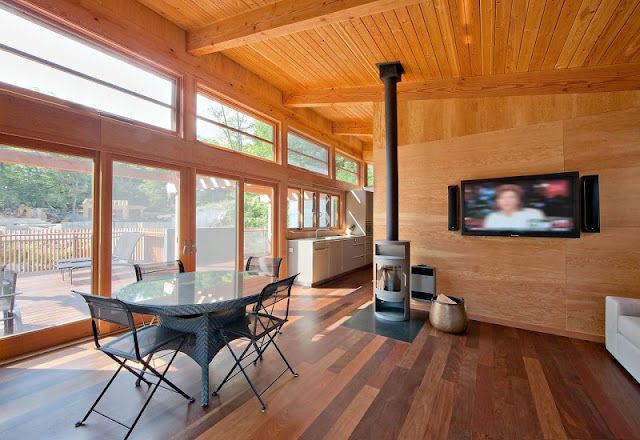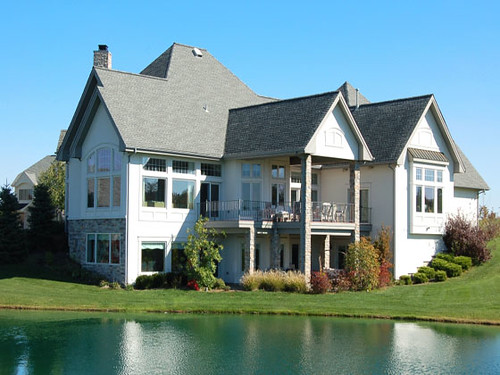
First impressions truly matter, especially when you’re looking to sell your home. The exterior of your property acts as the initial handshake, the very first thing potential buyers or visitors lay eyes on. This makes curb appeal an absolutely critical factor in setting the right tone and making a lasting, positive impact. It’s not just about looking pretty; a well-maintained and visually appealing exterior reflects an owner’s attention to detail and pride in their property, signaling to buyers that the home has been cared for inside and out.
Indeed, the impact of great curb appeal cannot be underestimated. A real estate study by the University of Texas at Arlington highlights just how significant it is, revealing that “keeping your exterior attractive and in good condition can boost your home’s value by up to 7 percent.” In a challenging market, this figure can even double, making exterior upkeep a powerful tool in your selling strategy. As Cindy Morrison, a Realtor from Tulsa, Oklahoma, aptly states, “Curb appeal has always been one of the most critical first impressions a home makes on potential buyers—it’s that ‘love at first sight’ moment.”
Conversely, a lack of attention to your home’s exterior can create a negative impression, potentially discouraging serious buyers, leading to lowball offers, or extending the time your home spends on the market. This gives buyers more leverage for negotiation, as Cristal Clarke, a Realtor based in Montecito, California, points out. Even a neighbor’s poorly maintained exterior can ripple outwards, negatively affecting your home’s value. To help you avoid these pitfalls and ensure your home shines, we’re diving into the most common curb appeal errors identified by real estate professionals—and, more importantly, how to fix them.

1. **Overgrown Landscaping**Overgrown landscaping is one of the most immediate and glaring curb appeal mistakes that can significantly detract from a home’s perceived value. Imagine approaching a property where the lawn is unkempt, trees are sprawling unchecked, and garden beds look utterly neglected. Such a sight instantly communicates an impression of poor care and a lack of pride in ownership, sending a silent but strong message to potential buyers that maintenance might be an issue throughout the entire home, not just the yard.
Beyond the aesthetic drawbacks, overgrown greenery can obscure essential features of your home, effectively making it appear smaller or less inviting. Overhanging branches can block natural light from entering windows, casting a perpetual shadow on living spaces and making the interior feel darker. Furthermore, thick, untrimmed vegetation can create safety hazards, providing hiding spots or making pathways difficult to navigate. This not only diminishes the visual appeal but also raises practical concerns for residents and visitors alike.
Perhaps most alarmingly, unchecked landscaping can lead to structural damage over time. Tree roots, as they grow and expand, can crack pavements, driveways, and even interfere with your home’s foundation, leading to costly repairs. Similarly, branches that are too close to the house can rub against roofing, dislodge shingles, or create entry points for pests. JenniferPhotographyImaging // Getty Images captures this perfectly, illustrating how a beautiful home can be overshadowed by neglected surroundings.
The good news is that this is a fixable problem that can yield substantial returns. Cindy Clarke recommends getting your yard in tip-top shape by removing any dead plants, trimming trees to appropriate sizes, and refreshing garden beds with colorful flowers or a layer of fresh mulch. Creating a manicured, lush outdoor environment is pivotal for attracting discerning buyers. Additionally, Cara Ameer, a real estate agent with Coldwell Banker Vanguard Realty, suggests that “if you have overgrown bushes that are hiding your house, it may be time to replace them with greenery that shows off the home versus concealing it.” These strategic updates signal a well-cared-for home and make a powerful statement.
Read more about: 11 Crucial Home Security Mistakes That Invite Burglars — and Smart, Actionable Fixes

2. **Lack of Landscaping (A Bare Yard)**While overgrown landscaping can be a deterrent, the opposite extreme—a bare yard with minimal greenery—can also significantly reduce your home’s curb appeal. A property lacking thoughtful landscaping can feel stark and uninviting, especially when considering high-value homes where the outdoor environment is often viewed as an essential extension of the home’s overall design and lifestyle offering. This absence of natural elements can make a property seem cold, uninspired, and frankly, uncared for, signaling to buyers a potential indifference to the property’s aesthetic and practical potential.
Without the softening effect of trees, shrubs, or flower gardens, the property’s exterior can appear harsh and unwelcoming. Beyond visual appeal, a bare yard can have practical implications. Properties without shade-providing trees or shrubs may experience increased heating from direct sunlight, leading to higher energy costs during warmer months for future homeowners. This detail, often overlooked, can be a subtle but impactful point of concern for environmentally conscious or budget-minded buyers. Allison/Adobe Stock provides a visual reminder of how an empty space can feel.
Furthermore, a poorly landscaped yard may fail to address essential drainage issues, resulting in water pooling in unwanted areas or contributing to soil erosion. Thoughtful landscaping often incorporates solutions for managing rainwater, such as strategically placed beds or gentle slopes, which are absent in a bare yard. This omission can raise concerns about potential water damage to the home’s foundation or other structural elements, adding another layer of apprehension for prospective buyers.
The solution here lies in embracing the power of carefully chosen greenery. Adding trees, shrubs, or flower gardens can dramatically soften the home’s appearance and make it feel much more welcoming. Cristal Clarke explains that “a thoughtfully landscaped yard, on the other hand, can provide warmth and charm, drawing in buyers and boosting the overall value of the home.” For those concerned about ongoing maintenance, Bonnie Stein, an associate real estate broker in Westchester County, New York, suggests considering low-maintenance plants. These options can still provide aesthetic appeal without overwhelming potential buyers with the prospect of extensive upkeep, ensuring the yard feels both beautiful and manageable.

3. **Peeling Paint or Fading Exterior**Few things diminish a home’s aesthetic appeal as quickly and drastically as peeling paint or a faded exterior. When potential buyers arrive, chipped paint, weathered walls, or a tired, discolored facade immediately create an impression of neglect and poor maintenance. This isn’t just a minor visual flaw; it’s a strong visual cue that raises concerns about the overall condition of the property, making buyers wonder if other, less visible, maintenance issues might also be lurking beneath the surface. Alexandre Patchine/Adobe Stock clearly illustrates the negative impact of such deterioration.
This immediate visual drawback can significantly impact a home’s perceived value. A fresh coat of paint, by contrast, signals care, attention to detail, and a proactive approach to homeownership, helping the house feel inviting and well-cared for. When a home looks neglected from the outside due to its paint condition, buyers are more likely to “undervalue the property or hesitate to make an offer entirely,” as Cristal Clarke explains. They might even factor in the significant cost of repainting into their offer, reducing your potential profit.
While painting the entire exterior of a home is undoubtedly an expensive undertaking, especially if you’re unsure about the colors resonating with future buyers, there are high-impact, more affordable solutions. Clarke wisely recommends at least repainting specific areas that draw immediate attention. Focusing on the front door, shutters, or siding can dramatically improve the home’s curb appeal and make it feel fresh and updated. Choosing the right paint colors can even help sell your home for more money, demonstrating how a targeted investment can yield significant returns.
Read more about: The Comprehensive Guide: Protecting Your Car’s Undercarriage from Winter Salt Damage
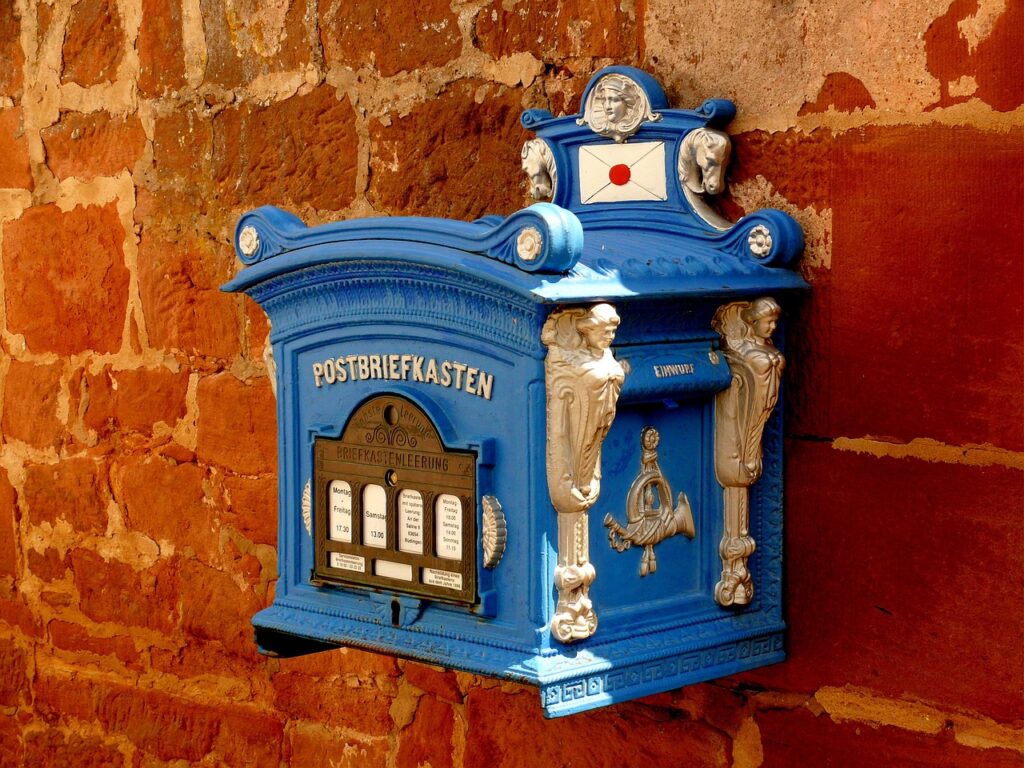
4. **Outdated Address Numbers or Mailbox**Details, no matter how small, contribute significantly to the overall impression of your home’s curb appeal. Outdated address numbers or a neglected mailbox are perfect examples of minor elements that can send surprisingly strong negative signals. Worn, corroded, or mismatched design elements can instantly make your property appear older and less desirable, even before a potential buyer steps out of their car. Gale Distler/Adobe Stock provides a stark visual of how these small items can impact the whole.
Consider the address numbers: these are often the first specific details potential buyers focus on as they try to locate your home for a showing or an open house. If these numbers are outdated or chipping, they project an image of neglect. As Cara Ameer points out, “replacing them with fresh numbers that match your home’s architectural style is an easy way to amp up your curb appeal.” This simple update not only aids navigation but also contributes to a polished, well-maintained exterior that complements your home’s design.
Similarly, an old, rusted, or leaning mailbox can be a significant detractor. It suggests a lack of attention to detail and can even give the impression that the house is unattended or uncared for. “When driving or walking past a house, a mailbox can be the first thing you see, therefore giving a not-so-good impression of the home,” the context emphasizes. Fortunately, homeowners have a wealth of stylish mailbox options to choose from, ranging from modern designs that pair beautifully with planters to vintage, envelope-shaped dropboxes. Investing in a new mailbox can be an inexpensive yet highly impactful way to enhance your home’s exterior.
Overlooking these seemingly minor updates may lead buyers to assume that other aspects of the home are also outdated or require attention, potentially reducing its value in a competitive real estate market. By addressing these small but visible details, you create a cohesive and welcoming exterior that reassures buyers about the home’s overall upkeep.
Read more about: Mystery Solved: 11 Classic Commercials Who Vanished From Prime Time TV — And Where to Stream Them All Now.

5. **Cracked Driveways or Walkways**Nothing detracts from a positive first impression quite like cracked driveways or walkways. These immediate visual cues signal poor upkeep and can raise significant concerns about broader maintenance issues with the property. Potential buyers, seeing these cracks, might immediately question the structural integrity of the home, leading them to worry about underlying foundation problems or soil instability, which are often costly and time-consuming to address. The image from ottoblotto // Getty Images serves as a clear reminder of this common problem.
Beyond the aesthetic and structural concerns, cracks in driveways and walkways also pose safety risks. Uneven surfaces and trip hazards can deter buyers, especially those with young children or elderly family members, or individuals with mobility concerns. Such safety implications can lead potential buyers to lower their offers or even lose interest in the property altogether, regardless of how updated the interior might be. Cara Ameer highlights this, stating, “A buyer may be put off by the driveway’s condition and not want to go any further, even if the home is totally updated inside.”
Fortunately, addressing a cracked and stained driveway doesn’t always require a complete and expensive replacement. Dale Smith, founder of Fence Guru, offers practical solutions that can restore its appeal without breaking the bank. He advises that power washing can remove most stains, instantly refreshing the surface. For cracks, applying crack filler and a driveway sealer can significantly improve the appearance and condition for under $200. These steps can make a substantial difference in presenting a well-maintained exterior.
For more severe damage, resurfacing the driveway is a viable option that costs a fraction of a full replacement while still providing a smooth, renewed surface. In cases where the driveway is in truly poor shape, a complete replacement might be necessary, or an alternative is to offer a credit to the buyer. This credit allows them to choose the type of driveway material they prefer, turning a potential negative into a flexible and attractive option.
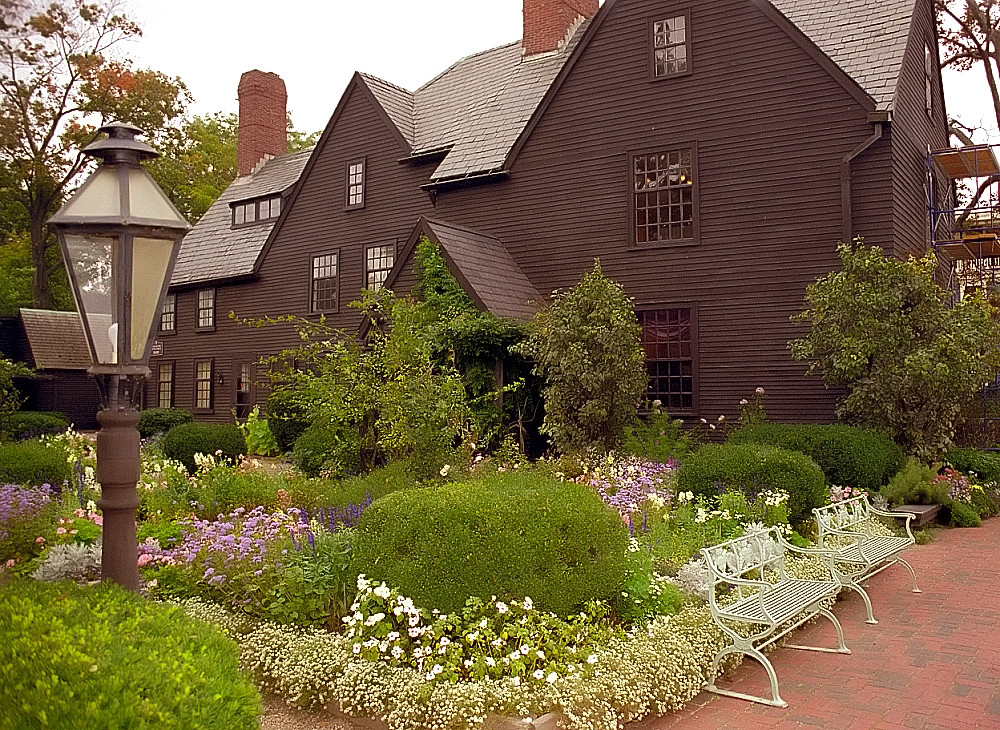
6. **Poor Exterior Colors**The choice of exterior colors for your home plays a surprisingly crucial role in curb appeal, impacting how welcoming and cohesive your property appears. Poor exterior colors, characterized by bold, mismatched, or faded paint schemes, can easily overwhelm visitors and significantly detract from your home’s architectural character. Instead of highlighting the home’s best features, inappropriate colors can make the property look less integrated and far less inviting, creating an impression that is difficult for potential buyers to overcome. Zhivko/Adobe Stock visually captures the impact of such color choices.
Bright, unconventional, or clashing color combinations can be particularly problematic, as they tend to alienate a broad spectrum of potential buyers. While you might love a vibrant fuchsia or a unique chartreuse, many buyers struggle to envision themselves living in a home with such a distinct and personal palette. They want to see a neutral canvas that allows them to project their own style and preferences onto the property. These visual drawbacks can lead to lower perceived value and may even result in fewer offers, as buyers struggle to look past the overwhelming exterior.
To ensure your home appeals to the widest possible audience, opting for neutral, universally appealing palettes is generally preferred. These timeless colors—think soft grays, warm beiges, classic whites, or muted blues and greens—tend to highlight the home’s design features and allow potential buyers to focus on its overall charm rather than being distracted by the paint. They provide a sophisticated backdrop that feels both modern and inviting, making it easier for buyers to imagine personalizing the space.
When considering repainting, Dale Smith suggests choosing welcoming colors for high-impact areas like the front door, such as “deep navy, forest green or classic black.” For broader exterior repainting, focusing on the front facade can create a significant visual refresh without necessarily repainting the entire house. This strategic approach ensures your home’s exterior colors work to your advantage, enhancing its appeal and value rather than inadvertently diminishing it.
Read more about: Navigating the Digital Road: Which 2025 Cars Offer the Best Infotainment Usability?
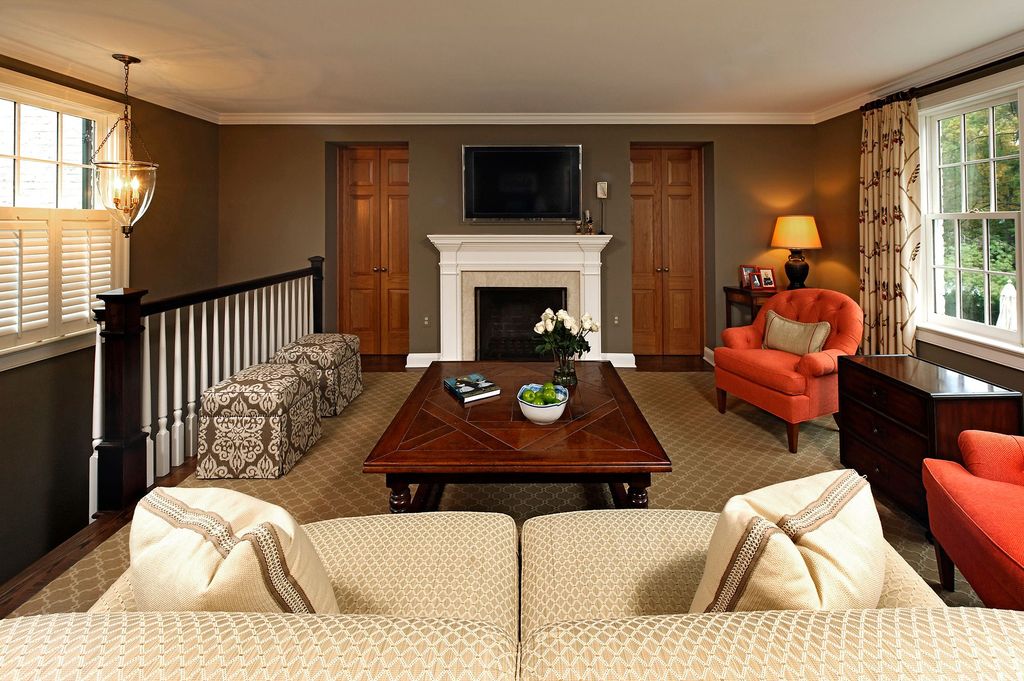
7. **Neglecting Repairs**Neglecting essential repairs, even seemingly minor ones, stands out as a significant curb appeal mistake that can drastically diminish a home’s value. When cracks in the driveway, a broken fence, sagging gutters, or even a squeaky gate go unaddressed, they immediately draw attention to a perceived lack of maintenance. These issues are not just isolated problems; they act as glaring red flags to potential buyers, suggesting a broader pattern of neglect that extends beyond the visible exterior. Tom/Adobe Stock perfectly illustrates how neglected details can accumulate to create a negative impression.
When a home appears neglected on the outside, buyers often make a logical, though sometimes incorrect, leap: they conclude that “the inside is just as bad, or even worse.” This assumption can immediately put your property at a disadvantage, regardless of how pristine and updated the interior might actually be. Buyers are not just purchasing a house; they are investing in peace of mind, and visible signs of disrepair create significant apprehension, making them anticipate a long list of future expenses and headaches.
These anticipated additional expenses will undoubtedly deter buyers and sellers, ultimately pushing the house into the lowest tier of the real estate market. Buyers will factor in the cost of these repairs into their offers, often overestimating the expense, leading to lower bids. Moreover, the very presence of these deferred maintenance tasks can make a property feel overwhelming and unappealing, causing potential buyers to simply walk away without even considering its interior potential. Ignoring these basic upkeep tasks sends a clear message that the property has not been a priority.
The solution is straightforward but crucial: address essential repairs promptly. While the context provides examples of addressing specific issues like cracked driveways and damaged fences, the overarching message from real estate professionals is the importance of general upkeep. Dale Smith emphasizes that addressing “maintenance required” signals like peeling paint or rusted gates can make all the difference. By proactively fixing these issues, you not only improve the home’s appearance but also reassure buyers that the property has been well-cared for, boosting its perceived value and making it a much more attractive prospect.
Read more about: Are You Truly Detail-Oriented? Unmasking 14 Overlooked Truths About Cars That Annoy Informed Amateurs and Professionals Alike

8. **Political Posters**While you might be deeply passionate about your beliefs, displaying political posters, banners, or candidate signs during election season can unintentionally create an unwelcome barrier in your home sale journey. As Larry DeVardo, a sales associate with Coldwell Banker Realty in Hillsdale, New Jersey, astutely cautions, “In this climate, anything political will invoke emotion and you can potentially offend 50 percent of your potential buyers.” Your paramount goal when selling is to cultivate a universally appealing and neutral environment, not to inadvertently spark political debate or alienate prospective homeowners.
These visual declarations often represent specific ideologies or deeply held beliefs that may not align with the diverse perspectives of every individual walking through your door. Such a mismatch can immediately generate a sense of discomfort or lead viewers to form biased opinions, not only about your personal politics but potentially about the entire property. When buyers are confronted with strong personal statements, it diverts their attention from the home’s inherent features, making it significantly harder for them to envision their own lives unfolding comfortably within its walls and grounds.
To ensure you create a truly welcoming and accessible environment for everyone, it is highly advisable to meticulously remove any politically charged materials during all showings and open houses. By presenting a clean, unbiased, and neutral slate, you actively appeal to the broadest possible audience, fostering a more positive, open-minded, and objective viewing experience. This simple yet profound step helps to eliminate emotional hurdles and ensures the focus remains solely on the undeniable charm and value of your home, making it a far more attractive prospect to a wider range of potential buyers.
Read more about: The Curated Canvas: A Luxurious Journey Through Madonna’s $100 Million Art Collection, from Cubist Legacies to Kahlo’s Poignant Self-Portraits

9. **Planting Trees Too Close to the House**Trees, when thoughtfully integrated into a landscape, can undeniably elevate a property’s aesthetic appeal, offering beautiful shade and a valuable sense of maturity. However, their exact placement is absolutely critical, as planting them too close to the main structure of your house can inadvertently lead to significant, unforeseen, and often very costly issues. This seemingly minor oversight can have profound structural and functional consequences, severely detracting from your home’s value rather than enhancing it.
One of the most concerning problems stems from powerful root systems. As these roots grow and relentlessly expand in their quest for water and nutrients, they inevitably spread towards your home’s foundation. This aggressive, invasive growth exerts immense pressure, potentially causing severe structural damage. Consequences can manifest as cracks in foundation walls, uneven interior floors, or even more profound foundational shifts that are both incredibly expensive and highly disruptive to address and repair properly.
Beyond the insidious dangers lurking beneath the ground, overhanging branches also present a host of visible and practical problems. Branches positioned too close to the house can significantly obstruct natural light from entering your windows, making interior living spaces feel perpetually darker and less inviting and leading to increased reliance on artificial lighting. Furthermore, branches that constantly scrape against your roof can abrade shingles, dislodge them, or create convenient entry points for unwelcome pests like rodents and insects, compromising the crucial integrity of your home’s exterior envelope.
Therefore, maintaining a proper and safe distance between established trees and your house is not just a suggestion, but an absolutely essential practice for ensuring long-term safety, optimal functionality, and effectively preserving or even boosting your home’s intrinsic value. A thoughtfully placed tree can still deliver all the coveted benefits of shade and beauty without introducing the significant risk of damage to the home’s foundation or exterior. This careful, forward-thinking planning contributes significantly to the impression that your home is a meticulously cared-for and valuable asset.
Read more about: 11 Crucial Home Security Mistakes That Invite Burglars — and Smart, Actionable Fixes
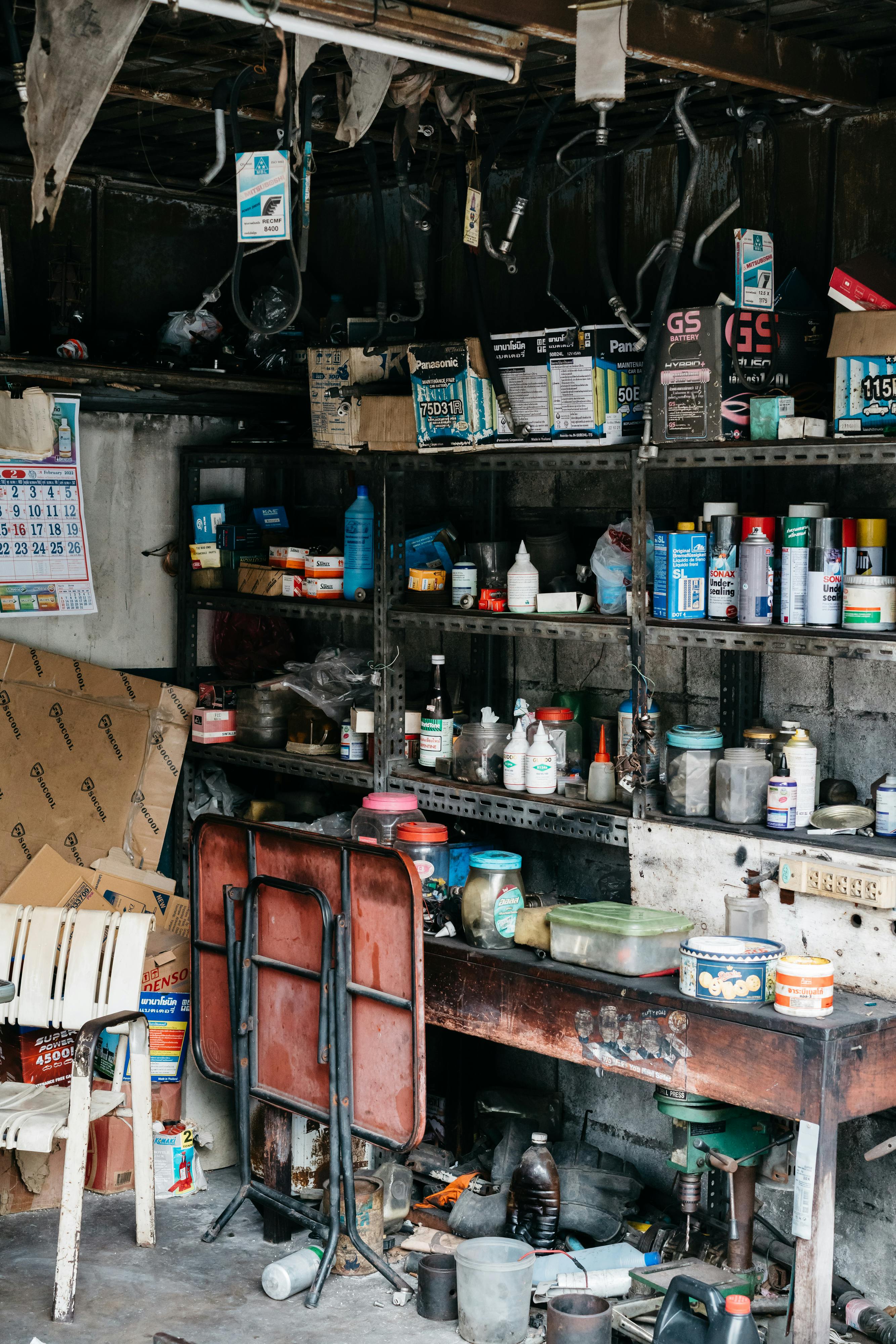
10. **Cluttered or Disorganized Garage**While the garage is often perceived as a purely utilitarian space—a haven for tools, seasonal decorations, or perhaps even an extra refrigerator—a cluttered or thoroughly disorganized one can unexpectedly diminish the overall appeal of your entire property in the discerning eyes of potential buyers. When they pull up to your home and that garage door swings open, revealing an overwhelming jumble of accumulated belongings, it instantly creates a negative first impression that can subtly—or, indeed, quite overtly—impact their perception of your home’s inherent value. This area, often overlooked in staging, can be a surprising deal-breaker.
Buyers are often on the lookout for homes that offer ample storage solutions, and a messy garage immediately signals a potential shortage of space within the home itself. This can significantly lower their interest, especially for families or individuals who value organization and functionality. Furthermore, pervasive disorganization within this large and visible space can inadvertently create a general sense of neglect across the property, leaving viewers with a strong impression that if the garage isn’t well-maintained, other, less visible areas of the property might also suffer from a critical lack of attention and consistent care. This perception can serve as a significant and immediate red flag for those looking for a move-in ready home.
The excellent news is that transforming a cluttered garage into a functional, appealing space is an entirely manageable project that promises high returns on your effort. To effectively address this concern, dedicate time to thoroughly organize the garage by ruthlessly decluttering, removing anything that you no longer need or use regularly. Once cleared, implement smart, space-saving storage solutions: make judicious use of sturdy shelves for larger items, pegboards for tools, and clearly labeled bins for smaller, miscellaneous belongings. A well-organized, clean garage not only maximizes the perceived storage capacity of the home but also clearly communicates that the entire property is well-cared for and efficiently managed, reassuring buyers that every inch of the property is a valuable, functional asset.
Read more about: Owners Consider This: 10 Warning Signs of Auto Repair Shops You Should Seriously Think Twice About Trusting
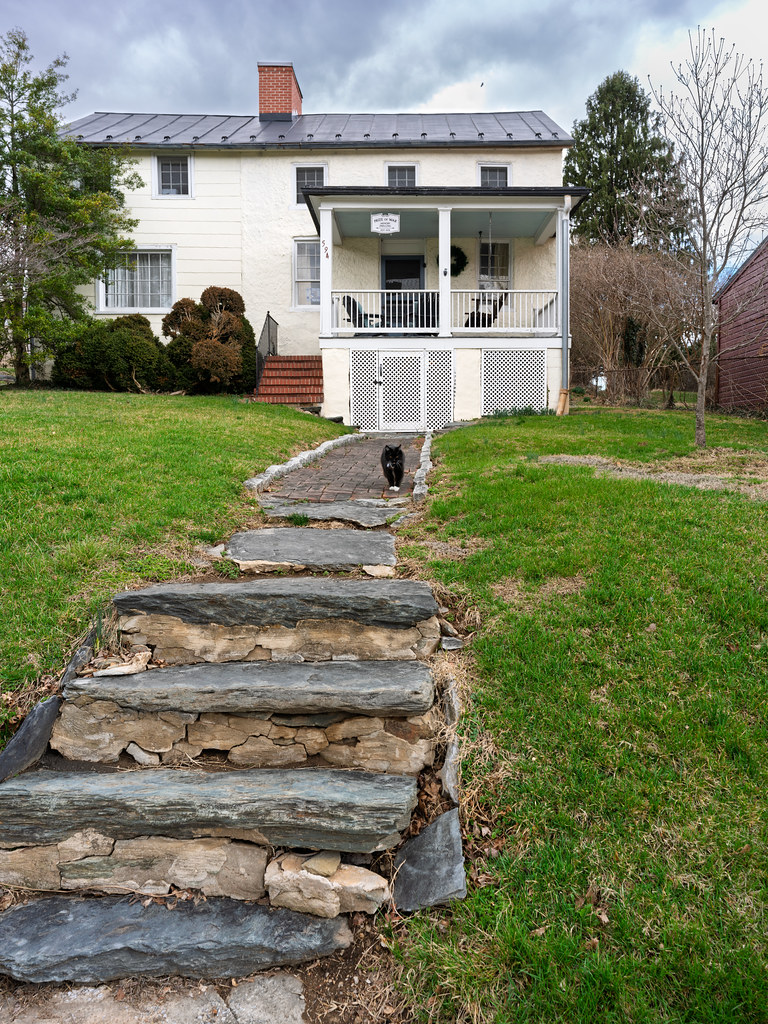
11. **Cluttered Front Porches and Entryways**Much like a meticulously tidy interior makes a home instantly inviting, a cluttered front porch or entryway can inadvertently create a chaotic and distinctly unwelcoming first impression that impacts buyer perception from the moment they arrive. When potential buyers approach your property, their initial view of your home should evoke a sense of warmth, order, and readiness to welcome them inside, not present a challenging obstacle course around your personal belongings. Porches that are packed with old furniture, stray garden tools, or an excessive collection of personal items immediately signal disorganization rather than a comfortable, well-cared-for home.
This visual disarray actively prevents potential buyers from forming that crucial emotional connection with the property. They struggle to envision themselves settling into the space when it is dominated by your personal effects. Furthermore, clutter distracts significantly from the inherent architectural features or charming decorative details of your home’s entrance, which are intended to draw the eye and create an attractive focal point. The primary objective is to make the entryway feel expansive, effortlessly accessible, and aesthetically pleasing, rather than cramped, overly personalized, or neglected.
The good news is that the solution for a cluttered porch is remarkably simple, straightforward, and highly effective, promising immediate improvements to your home’s curb appeal. Begin by clearing away everything except a few thoughtfully chosen, purposeful, and welcoming touches. This means carefully removing any excess furniture, stashing away all garden tools, and ensuring that personal effects are neatly out of sight. Instead, opt for elegant potted plants that introduce a touch of vibrant greenery, a clean, high-quality, and inviting doormat, or a tasteful, well-maintained outdoor light fixture. These small, strategic additions collectively make a profound difference, transforming your entryway into an attractive, genuinely welcoming, and memorable feature that significantly enhances your home’s overall curb appeal and buyer desirability.

12. **Poor or Broken Outdoor Lighting**The importance of effective outdoor lighting extends far beyond mere aesthetic considerations; it plays an absolutely crucial role in making your home feel genuinely welcoming and, perhaps even more critically, secure and safe, especially as daylight fades into dusk. Dark entryways, shadowy pathways, and unlit exterior areas immediately conjure a sense of unease and can make a property appear decidedly uninviting to potential buyers. This lack of illumination doesn’t just diminish curb appeal; it can actively raise significant security concerns for anyone visiting or passing by your home in the evening hours, signaling a potential vulnerability.
Specific issues such as broken porch lights, missing or burnt-out bulbs, or outdated and corroded light fixtures can drag down a home’s evening appeal considerably and are immediate red flags. These powerfully signal neglect and can leave buyers with lingering doubts, wondering if other, more critical safety or essential maintenance aspects of the home have also been overlooked or ignored. A home that feels unsafe, poorly lit, or difficult to navigate in the dark can be a profound deterrent, overshadowing even its most charming qualities and updates that shine during the day.
Fortunately, enhancing your outdoor lighting is often one of the most affordable, straightforward, and impactful updates you can make to your property. Begin this transformation by replacing any old, corroded, or outdated fixtures with sleek, modern alternatives that not only complement your home’s architectural style but also provide superior illumination. Crucially, ensure that all bulbs are working perfectly, and consider upgrading to energy-efficient LED options. For an instant boost to nighttime curb appeal and pathway safety, solar pathway lights are an excellent, inexpensive, and easy-to-install solution, often costing under $50. These strategic investments can dramatically improve visibility, profoundly enhance safety, and ensure your home shines brightly and invitingly, day and night.
Read more about: Unlocking Your Mornings: 14 Routines to Ditch for Sustainable Energy and Burnout-Proof Days
13. **Damaged or Outdated Fencing**Your home’s fencing isn’t just a boundary; it acts as a crucial frame for your entire property, playing a profoundly significant role in its overall aesthetic appeal and its perceived value. Damaged or outdated fencing can immediately send strikingly negative signals to potential buyers, drastically diminishing your home’s curb appeal and raising a multitude of unspoken concerns. The sight of broken fence panels, a gate that is visibly rusted or sagging, or a fencing style that appears distinctly past its prime can instantly date a property and create an unavoidable impression of neglect, suggesting a lack of consistent care and investment.
Beyond the immediate visual impact, the condition of your fencing directly impacts perceptions of security and privacy for prospective buyers. A dilapidated or poorly maintained fence may suggest that the property isn’t adequately secured, or that previous owners failed to prioritize fundamental aspects of safety and demarcation. Buyers are actively seeking a move-in ready home that offers not only comfort but also invaluable peace of mind, and a compromised fence can make them critically question the property’s overall structural integrity and the level of diligent care it has genuinely received over its lifetime. It signals potential future expenses and vulnerabilities they’d rather avoid.
Addressing fencing issues is therefore not merely a cosmetic upgrade but a truly worthwhile investment that yields tangible returns. Begin this transformation by promptly replacing any broken panels to restore both structural soundness and visual continuity. For existing timber fencing that is still structurally sound but looks tired and worn, a thorough sanding and fresh coat of paint or stain can work absolute wonders, giving it a revitalized and well-maintained appearance. Alternatively, for those seeking a more durable and contemporary solution, consider updating to modern materials like aluminum, vinyl, or PVC. These options not only offer superior long-term appeal with minimal maintenance but also contribute a sleek, contemporary look that can significantly boost your home’s exterior allure, making it a standout in the market.
It’s abundantly clear that a home’s exterior is far more than just a meticulously crafted facade; it serves as a powerful, non-verbal narrative about the consistent care, thoughtful attention, and tangible value invested in the property. Every single detail, from the vibrant, manicured life of your garden beds to the sparkling clarity of your address numbers and the inviting glow of your outdoor lights, collectively contributes to that absolutely critical first impression. By proactively addressing these common curb appeal mistakes—whether it’s simplifying a cluttered porch, swiftly repairing a damaged fence, or thoughtfully choosing welcoming exterior colors—you’re not merely making superficial aesthetic improvements; you are, in fact, making a profoundly smart and strategic investment in your home’s future marketability and overall appeal. These careful, considered enhancements speak volumes to discerning potential buyers, confidently signaling a property that has been genuinely cherished, meticulously maintained, and is now perfectly poised to warmly welcome its next fortunate owners. Transforming your home’s exterior from merely good to truly spectacular is a journey composed of small, manageable, and highly impactful steps that, when taken together, undeniably pave the way to a successful sale and an unforgettable, impressive presentation.


